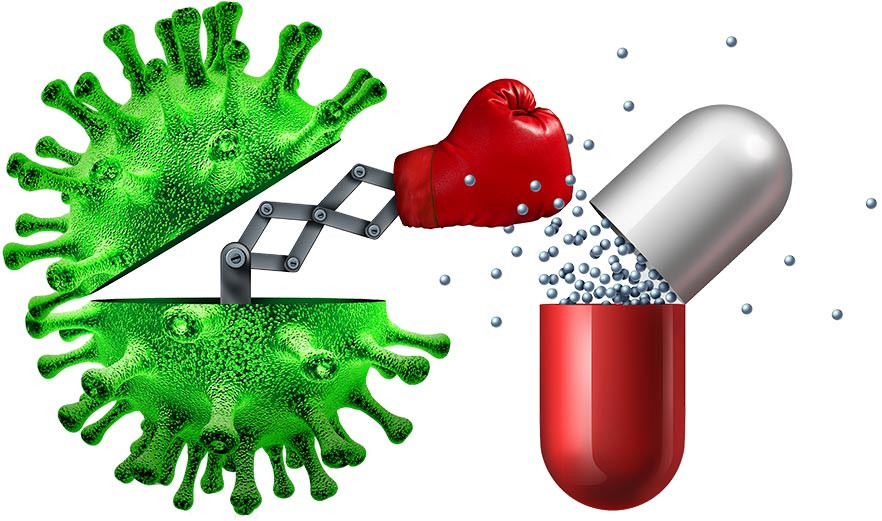Few media reports on drug companies’ role in fuelling anti-microbial resistance
Daily Sun Report, Dhaka
Published: 09 Oct 2024

Illustrated: Collected
A recent government study has revealed that reporting on antimicrobial resistance (AMR) for Bangladeshi newspapers has largely overlooked the aggressive and malign marketing practices of pharmaceutical companies.
While the misuse of antibiotics and antimicrobials by consumers and over-prescription by healthcare providers have received significant coverage, the role of pharmaceutical companies in influencing antibiotic prescriptions through incentives for physicians has been minimally reported.
This negligence in media reports exacerbates the already complex problem of antimicrobial resistance.
Researchers from icddr,b, in collaboration with the Ministry of Health and Family Welfare, Directorate General of Health Services, Sir Salimullah Medical College, and several international institutions, analysed 275 articles related to AMR published between 2010 and 2021 in 12 leading Bangladeshi newspapers.
The study found that 32.2% of the articles discussed the misuse of antibiotics and antimicrobials by consumers, 29% covered the sale of antibiotics and antimicrobials without prescriptions, and 26.1% focused on over-prescription by healthcare providers.
However, reporting on how pharmaceutical companies influence the spread of antimicrobial resistance through aggressive marketing tactics, such as incentivising doctors to prescribe certain medicines, was extremely limited.
Furthermore, nearly 45% of the AMR-related articles were event-driven, such as coverage of World Health Organization reports and seminars, rather than in-depth investigations into the root causes of antimicrobial resistance or its long-term effects on public health. This event-focused approach results in a lack of sustained public education on AMR.
Dr Tahmidul Haque, the lead researcher of the study and a research investigator at icddr,b’s Health Systems and Population Studies Division, said, “The aggressive marketing practices of pharmaceutical companies and the incentives given to doctors to prescribe specific antibiotics [and antimicrobials] are critical issues that need to be reported [by media outlets] more extensively. Without accurate and consistent media coverage, it’s challenging to raise public awareness about AMR and ensure accountability among healthcare providers.”
A rising public health threat in Bangladesh
Bangladesh, with a population of over 160 million, is facing a significant rise in antimicrobial resistance, posing a serious public health threat. Recent data shows alarmingly high resistance rates among people carrying certain common pathogens such as E coli, which causes urinary tract infections, gastrointestinal infections, and sepsis. Resistance rates to common antibiotics such as Ampicillin (94.6%), Amoxiclav (67.1%), Ciprofloxacin (65.2%), and Co-trimoxazole (72%) are exceptionally high, limiting treatment options, increasing the duration of illness, and raising healthcare costs and mortality rates.
Recommendations for journalists
The study calls for more investigative reporting on the role of pharmaceutical companies in promoting antibiotic and antimicrobial use, as the industry’s role is a crucial factor contributing to the rise in antibiotic resistance. By collaborating with healthcare professionals, researchers, and public health officials, journalists can produce well-researched, scientifically accurate reports that offer a more comprehensive understanding of AMR.
Dr Haque further stated, “Increasing the number of detailed, scientifically informed articles in both English and Bangla newspapers will help improve public awareness and understanding of AMR. This, in turn, can support national action plans to combat the growing threat of AMR.”
Global implications of AMR
Antimicrobial resistance is a major global health issue. In 2014, AMR was linked to 700,000 deaths worldwide. According to the World Health Organization, by 2050, antibiotic-resistant bacterial infections could result in up to 10 million deaths annually, with nearly 9 million of these occurring in Asia and Africa. The economic impact could reach $210 trillion, or 7% of global GDP, while approximately 24 million people may fall below the poverty line due to the high costs of AMR-related healthcare.

